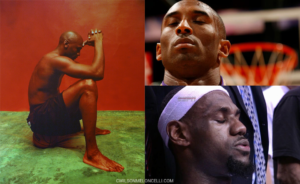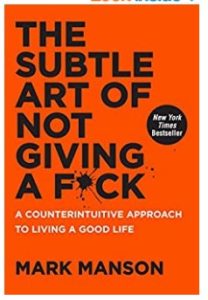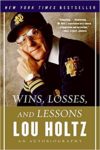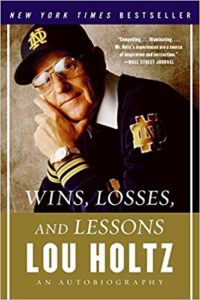 As I interviewed for various high school varsity coaching positions, I could see that some of the people on the selection committees seemed to be wondering “Why does he think he can take our school’s basketball program, which may have had only a handful of wins last season and establish a winning tradition?”
As I interviewed for various high school varsity coaching positions, I could see that some of the people on the selection committees seemed to be wondering “Why does he think he can take our school’s basketball program, which may have had only a handful of wins last season and establish a winning tradition?”
..
This post is in response to those skeptics that did not hire me… and, by choosing someone else, they gave me the opportunity to find a varsity coaching position that is an even better fit. (More on that in a future post.)
.. Is Winning Worth It?
If you are hiring a new coach, you might be wondering if winning is even a worthwhile goal. Isn’t it good enough to just field a team? My answer is NO and I have explained why winning is important in a previous post in case you on the fence.
..
Why build a winning basketball program
First, let me say that a certain amount of my motivation for building a winning program is selfish. I like to win and I like to see how my players grow as part of the preparation process that results in those wins.
I know that some of you have already tuned out. You heard “selfish” and decided that I am some kind of ego maniac who just wants to show how smart he is by winning basketball games.
..
Nothing could be further from the truth.
“I believe winning is a byproduct of preparation and mindset.” – Coach Dave Wheeler
I believe that young people should have the opportunity to LEARN HOW TO WIN, whether it is on a court, a field or in the classroom. Am I saying everyone should win? NO. Winning doesn’t work that way. The sooner we discover that we need to earn our wins, the sooner we will start doing the things it takes to win.
..
Are you ready to win?
At the core of my approach to basketball is a winning mindset that has 3 key tenets or beliefs.
- “We Never Quit”
Babe Ruth said, “It is hard to beat an opponent that never quits.”
..
Have I ever quit? Sure. I did 2/3 of a Half Ironman Race (swim, bike, run) in 90+ degree heat and had to drop out before the half marathon run portion. Does that mean I have quit on the idea of completing a full Ironman Triathlon? NO. It will happen and I continue to train.
..
Motivational speaker Les Brown says, “The game is not over until I win.” This works well in life but you are probably thinking that basketball is a little different. There is a scoreboard and a clock. The rules say that whichever team has the most points on the scoreboard when the clock runs out is the winner of the game. So if you are on the losing end of the score does that mean you can’t win?
..
The key is to have a bigger goal that defines “winning” for you and never quit until you win. The odds are that we probably won’t go undefeated this season but we can certainly beat more teams than we did last year. Can we get into the playoffs? With a shot at winning the whole thing? I like to aim high and work towards aggressive goals. That, plus a relentless drive to get better, is part of a winning mindset… and what I teach.
.. - “We control our minds” is the second key tenet or belief of a winning mindset. This is a little more complicated than “Never Quit” and it involves learning many new ideas that might be less commonly known.
..
The biggest take-away is how to control your mind so that you do not let your circumstances dictate your responses. We control how we approach the game. We control whether or not we let the bad calls made by referees (and we know that there will be more than one) control whether we get mad. We control what the events in our life mean to us and then use that control to react in the way(s) that get us the best results.
..
One example of how we control our minds is the first lesson I always teach the first week of practice: The difference between Pain and Suffering:
..
Pain is a physical sensation in your body. It is often a useful indicator that you are pushing your body to do more than it is used to doing, especially the first week of practice when we start the conditioning process.
..
Suffering, on the other hand, is optional. Suffering is a choice. Suffering is based on how we interpret pain. Is it the worst thing that has ever happened? Does it mean that the coach doesn’t like me? Or does it mean that my body is being challenged and I will be better and stronger tomorrow? Does it mean that I am getting future wins for the pain I am experiencing today? Does it mean that the coach cares enough to push me so I find out how far I can go beyond what I thought were my limits?
..
Suffering is a choice based on what we tell ourselves about the meaning of our current situation. By recognizing and controlling our choice of meaning, we get to experience life differently (and often in a better way).
.. - “We embrace and overcome Challenges” is the third tenet or value. Life is full of challenges. Some we choose and some are forced upon us. Basketball is very similar and it reveals that the challenges we choose are often related to the challenges that are forced on us.
..
For example, if we choose to challenge ourselves physically (so we get into peak condition) by the time we face outside challenges, such as a game against another school, we will be better prepared to overcome whatever challenge they may bring.
..
Preparation is one of the keys to winning and our mindset or approach toward challenges will determine how well we can prepare. Will there be challenges we did not anticipate or prepare for? Certainly. If not in basketball, there are always challenges in school and in life which we did not expect. Even with these challenges, if we approach them with a “Never Quit” attitude and with a clear understanding of how “We Control of Our Mind”, we will be much more likely to create a successful outcome.
Bottom Line…
I coach to win. Not because winning is the “ultimate goal” but rather because learning how to win is a skill that can be applied to almost any area of your life. It helps my players “set a higher standard” for their basketball careers as well as the rest of their life. They become winners.
..
Just like classroom teachers who provide critical skills such as algebra or proper grammar, I provide the skill of winning. The mindset that says “I will never quit”, “I know how to control my mind (and emotions)” and “I embrace and overcome challenges” because there will always be challenges if you want to achieve something great. In fact, there will always be challenges even if you aren’t trying to achieve something great… so why not choose greatness?
..


 There are a number of ways that meditation can be used by athletes to Train Your Brain to perform better both on the court or in the classroom. Some examples of the various types of meditations presented by Coach Wheeler include “No Regrets” meditation, Visualization and Mindfulness meditations. These and others will be discussed in the article below.
There are a number of ways that meditation can be used by athletes to Train Your Brain to perform better both on the court or in the classroom. Some examples of the various types of meditations presented by Coach Wheeler include “No Regrets” meditation, Visualization and Mindfulness meditations. These and others will be discussed in the article below. There are 5 key parts to becoming a consistent, successful shooter in the game of basketball. They are simple to understand but only the very best players actually
There are 5 key parts to becoming a consistent, successful shooter in the game of basketball. They are simple to understand but only the very best players actually  If you have not seen my previous Mental Toughness post:
If you have not seen my previous Mental Toughness post: 


